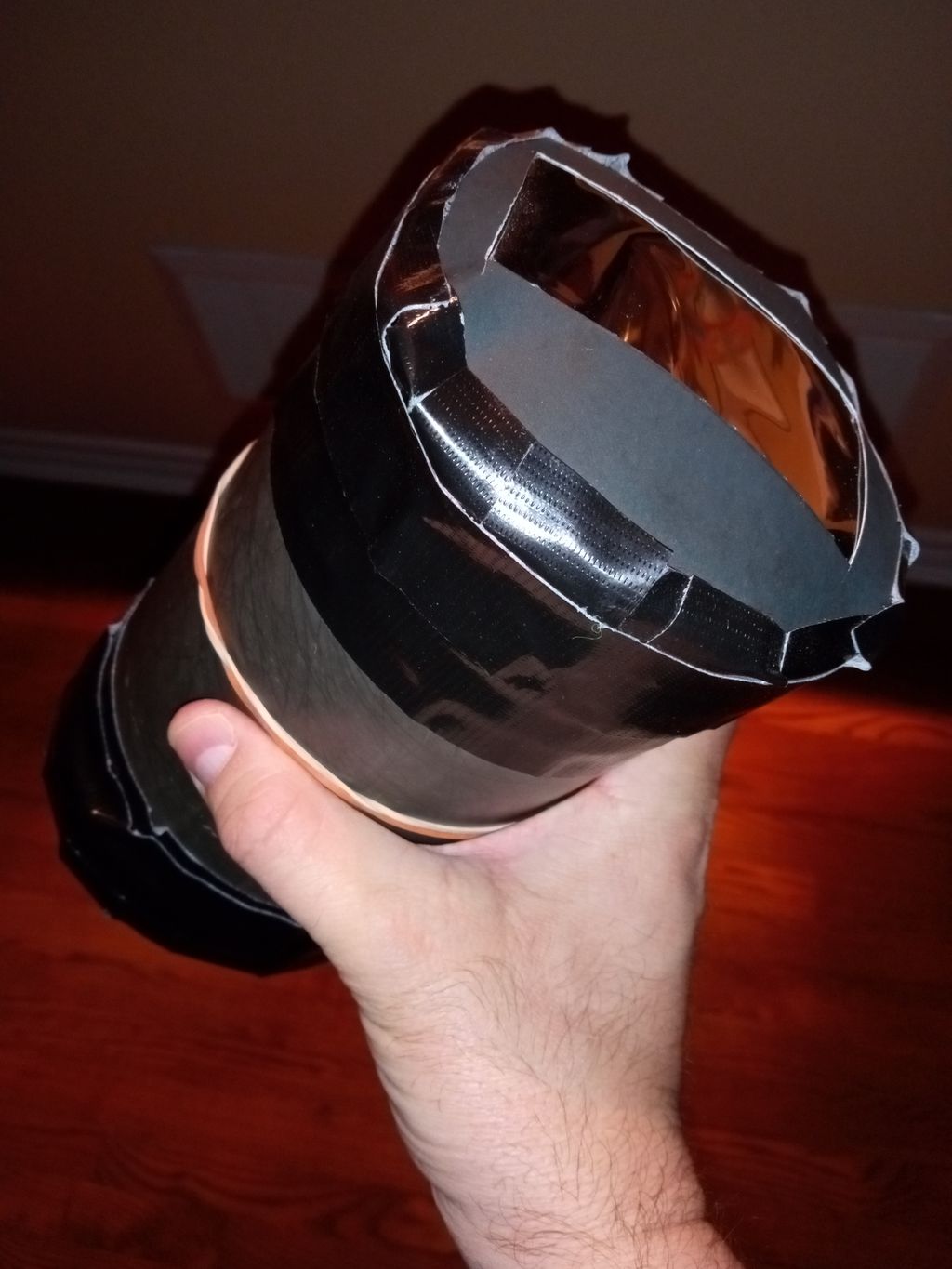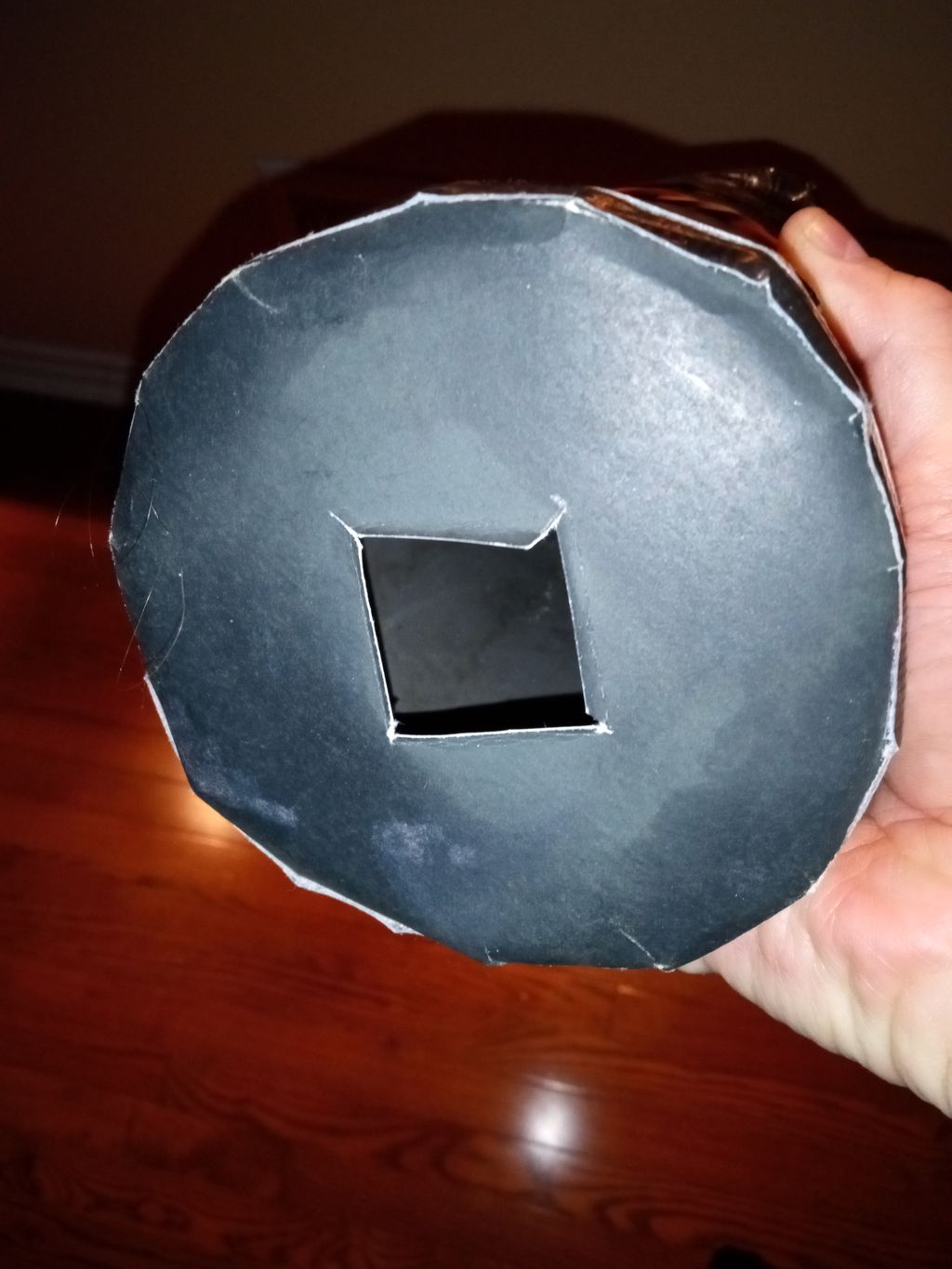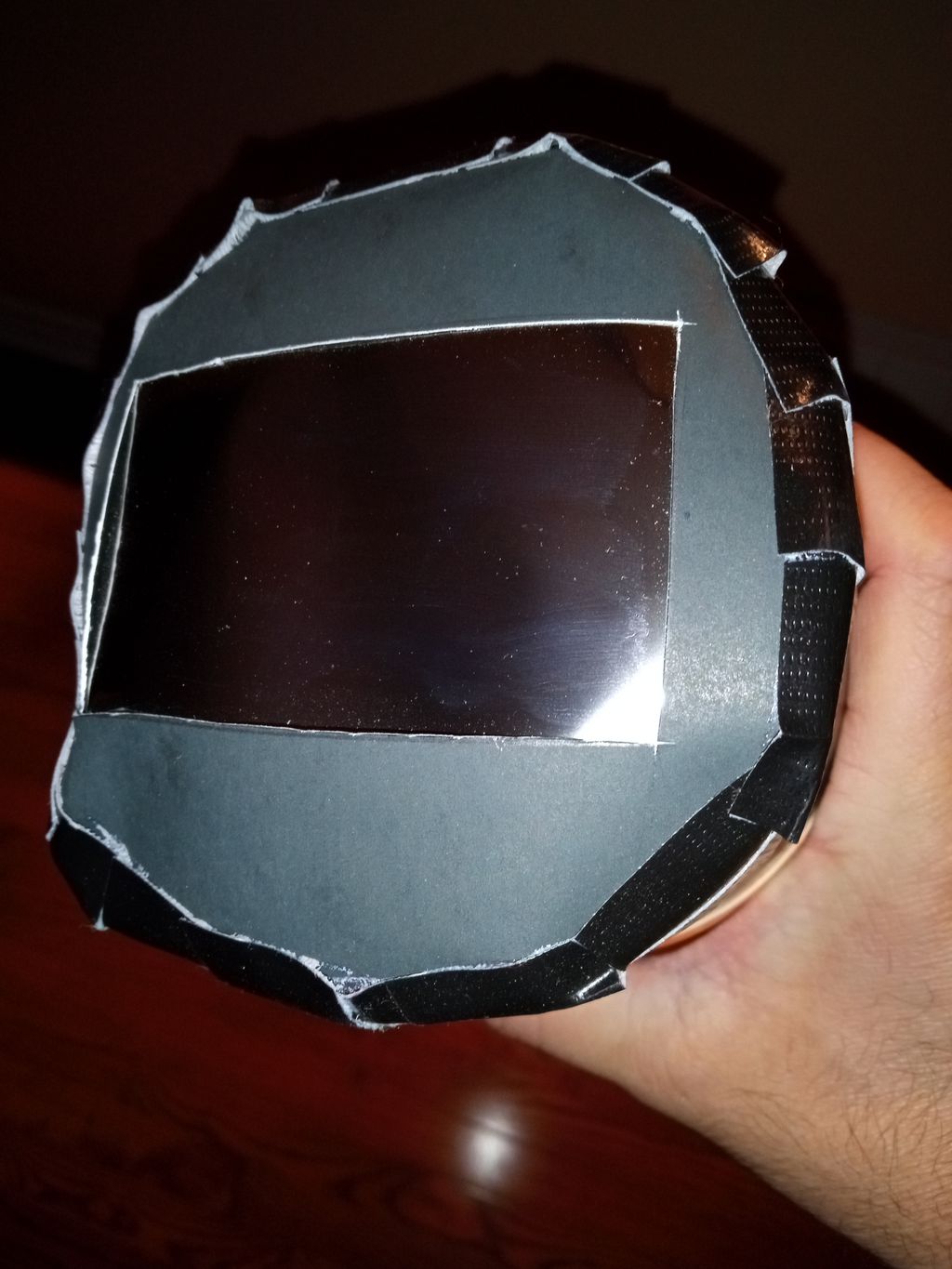Total Inventory of Parts used for this assembly:
- Two 86 mm UV filters
- Thousand Oaks Black Polymer filter
- 86 mm metal lens hood
- Step ring set
- 58 mm red filter
- 58 mm adapter to a 1.25-inch opening (I used this part for spectroscopy in the past)
The red filter is necessary to reduce the reflection of your eye from the glass of the internal UV filter. It gives the Sun a red cast, but it works well. The solar filter film is sandwiched between two UV filters. To protect my other eye, I wear an eye patch. Focus is achieved by varying the distance of the viewer from my eye.
Here are a couple of photos of the assembly:
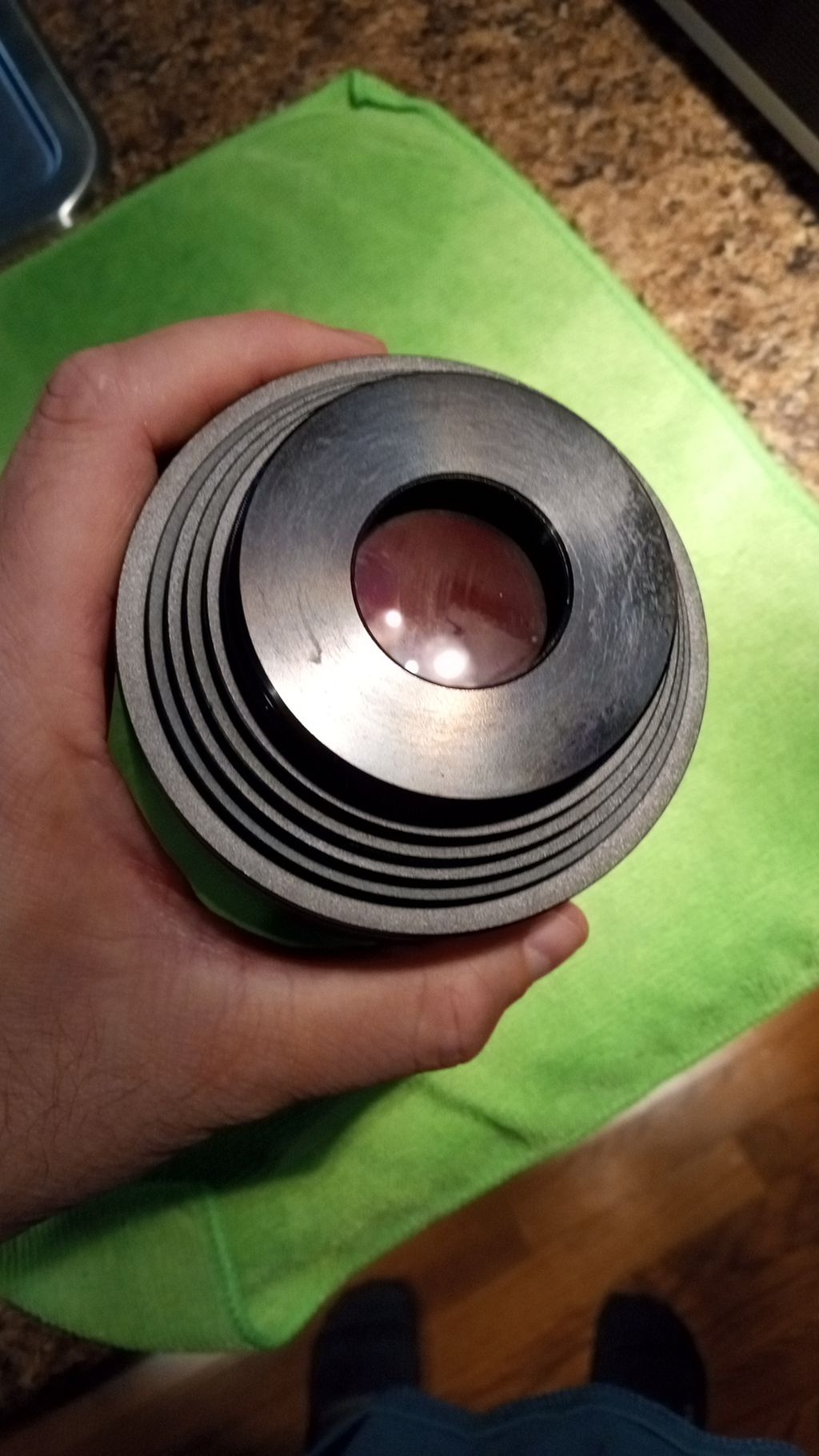
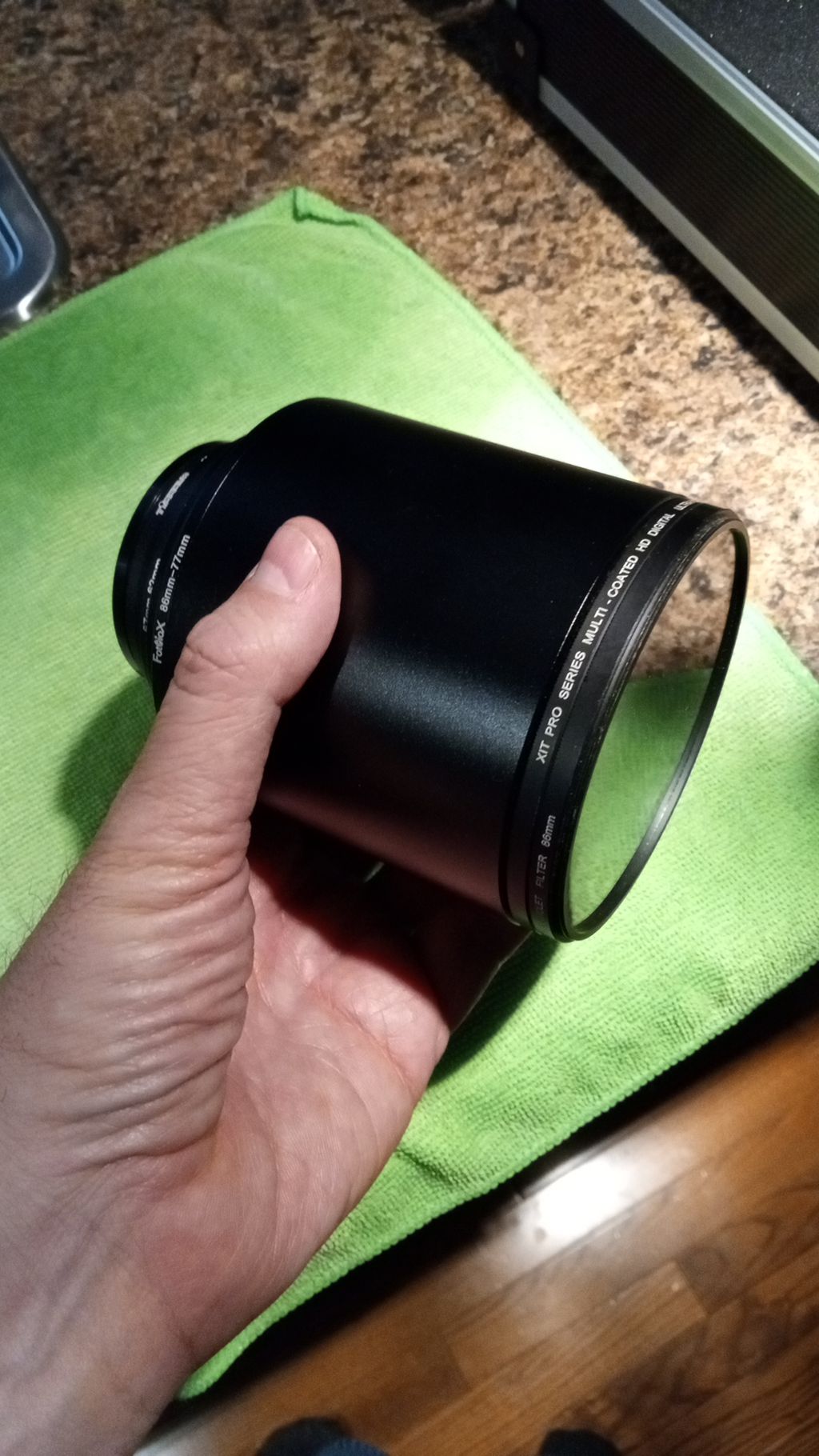
I also have it stored in a hard case for travel and to protect it when not in use. This is my way of checking daily for sunspots visible without a telescope.
Steven


